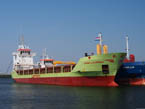Understanding the Increase in运费上涨 in Southeast Asian Sea Freight
The transportation sector in Southeast Asia has recently faced challenges due to rising运费上涨 in sea freight. This phenomenon has become a significant concern for businesses across the region, impacting logistics, supply chain management, and overall economic activities.
运费上涨 is primarily attributed to several factors. First, rising oil and gas prices have increased operational costs for shipping companies, leading to higher运费上涨. Additionally, the demand for goods in Southeast Asia has surged, outpacing the available运力, resulting in delays and cost increases.
The pandemic has also exacerbated these issues, with sudden shifts in global trade routes and increased competition among shipping companies for routes and cargoes. Moreover, geopolitical tensions and trade restrictions have further complicated the situation, causing disruptions in supply chains.
For businesses,运费上涨 means higher operational costs, delayed project timelines, and reduced profit margins. However, companies can mitigate these effects by exploring alternative shipping routes, optimizing cargo consolidation, and investing in more efficient technologies.
In conclusion,运费上涨 in Southeast Asian sea freight is a multifaceted issue with far-reaching implications for businesses and economies alike. Understanding the root causes and implementing strategic solutions are crucial for navigating this challenging environment effectively.
